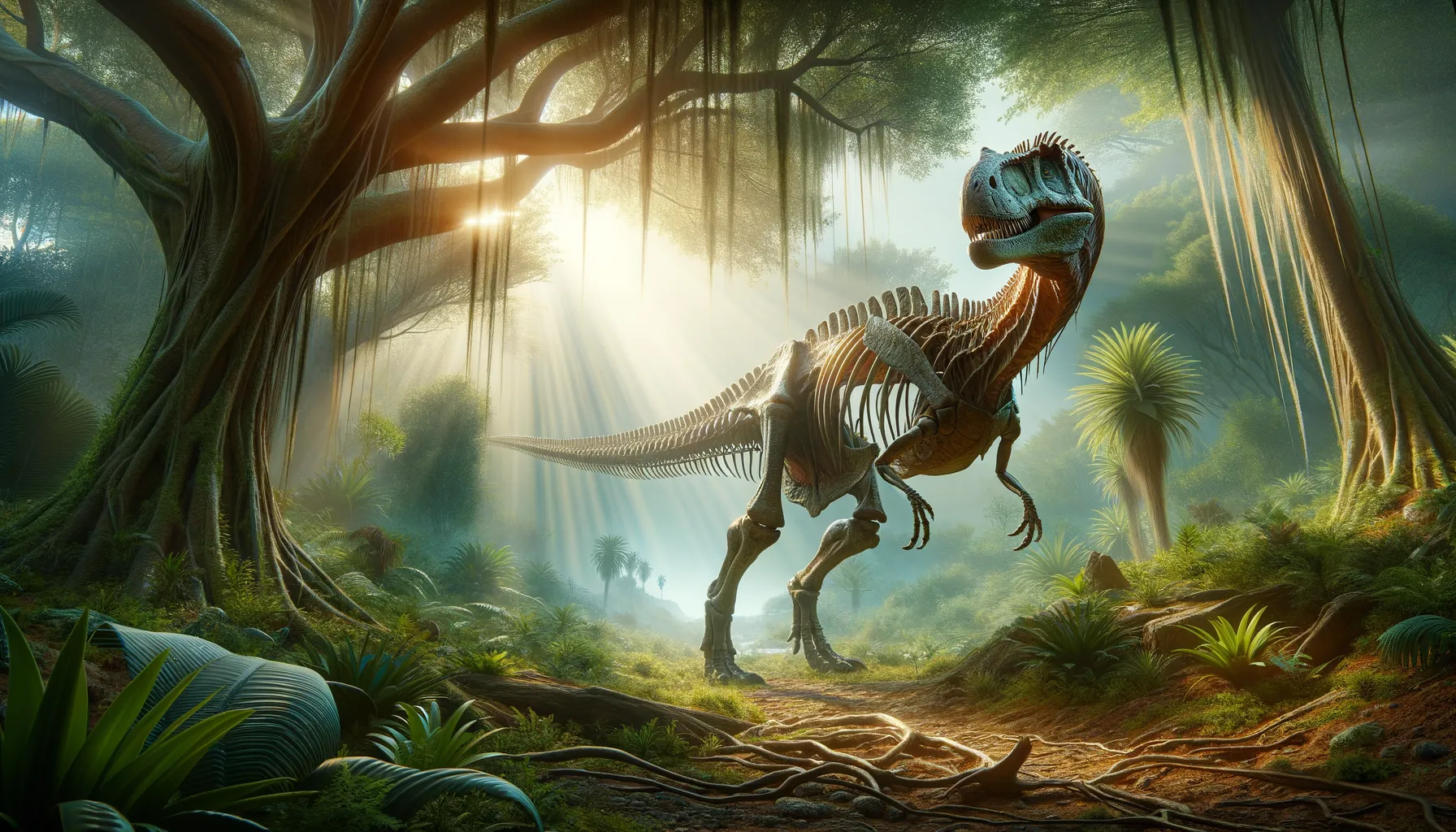
Ingentia
Giant strides in Jurassic heights.
Period
Jurassic
Length
Measured about 18 to 25 meters in length.
Height
Stood approximately 10 meters tall.
Weight
Estimated to weigh around 10 tons.
Ingentia was a massive herbivorous dinosaur known for its size and peculiar skeletal structure, which allowed for extraordinary growth. It lived during the Late Jurassic period and was one of the first near-giant sauropods in South America. Its unique features include expanded vertebrae and a lightweight frame, showcasing early adaptation strategies that enabled it to support its immense size efficiently.
Diet
Ingentia was a herbivore, consuming a wide variety of vegetation found in its environment. Its plant-based diet likely included ferns, cycads, and conifers typical of the Jurassic era.
Hunting
Ingentia, being a herbivore, did not hunt prey. Instead, it foraged for plant material, utilizing its long neck to reach high vegetation and its sturdy legs to move through dense forests.
Environmental challenges
Ingentia faced the challenge of sustaining its enormous size with a constant supply of plant material, which required traversing large areas for feeding. It also needed to find suitable habitats that offered ample water and food resources. Additionally, environmental changes, such as shifting climates and natural disasters, posed constant challenges.
Speed
Ingentia moved relatively slowly due to its massive size.
Lifespan
It likely lived for several decades.
First discovery
Discovered in Argentina in 2018.
Fun Facts
- Ingentia was a massive dinosaur that lived around 210 million years ago during the Late Triassic period.
- The name 'Ingentia' means 'huge', and it was one of the earliest large dinosaurs with its size comparable to a small bus.
- Despite its enormous size, Ingentia walked on four legs, making it a quadruped, similar to later giant dinosaurs like the Brachiosaurus.
- Ingentia's fossils were discovered in what is now Argentina, giving scientists important clues about the evolution of size in dinosaurs.
- One of the fascinating features of Ingentia is its bones, which grew differently compared to other dinosaurs, allowing it to reach larger sizes faster.
- It belongs to a group known as 'sauropodomorphs', which were the ancestors of the more famous giant sauropods.
- The discovery of Ingentia challenges the previous understanding of dinosaur evolution, showing that gigantism developed earlier than previously thought.
Growth and Development
Ingentia exhibited rapid growth compared to other dinosaurs, reaching enormous sizes earlier in life. Its growth was sustained by a unique skeletal system that included structures to support large body mass. Growth spurts could have been influenced by seasonal changes in food availability.
Habitat
Ingentia preferred lush, forested environments that provided abundant plant life. It likely inhabited areas with both open spaces and dense forests to access diverse plant species. Its habitat may have included river valleys and floodplains, which offered nourishment and water.
Interaction with other species
Ingentia may have interacted with other herbivorous dinosaurs by moving in herds to protect against predators. It shared habitats with smaller herbivores and potentially competed for food resources. Its enormous presence could deter smaller carnivorous dinosaurs.
Natural lifespan
Ingentia's natural lifespan was potentially several decades.
Reproduction
Ingentia reproduced by laying eggs, possibly in nests made in soft ground or vegetation piles. Parental care could have involved guarding nests against predators. The survival of young depended on factors like temperature and available resources.
Social behaviour
Ingentia might have moved in herds, providing collective defense against predators and facilitating synchronized feeding. Herd dynamics could include simple social hierarchies based on size and strength. Group movement would assist in finding food and water.
Fossil locations
Ingentia fossils have been predominantly found in Argentina, providing key insights into the early evolutionary stages of gigantism in sauropods. The discovery in South America highlights this region's rich paleontological diversity. Ongoing excavation continues to reveal more about its anatomy and lifestyle.
